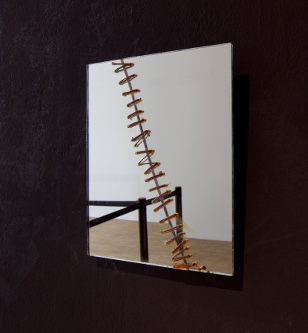Newsletter Search 



 Deutsch
Deutsch
18.03.2015
Lectures/Events
We, 18 March 2015, 7-9 pm
(Letures will be in English)
Étienne Balibar
The Other Scene of History: Extreme Violence and the destruction of the Political
How does one articulate the looming crisis of the political worldwide when there is a redistribution of old and new forms of extreme violence? To try and answer this question, we have a philosophical principle, which is questionable but acceptable as a working hypothesis: politics never exists without violence, but violence can be political or unpolitical, convertible or inconvertible into institutions. Its preservation must not be a denial of or a protection from extreme violence. It must address the difference and seek antidotes which amount to reinventing politics in the middle of danger. This is what I call civility. Finally we have tentative criteria to distinguish violence from extreme violence (or cruelty), in order to understand the reversible or irreversible transitions and their overdetermination. This lecture will assemble elements of this puzzle and illustrate them with contemporary examples.
Étienne Balibar (FR), Distinguished Professor of French & Italian and Comparative Literature at the University of California Irvine
Suzana Milevska
The Lack and its “Supplement”: The visible and invisible violence of monuments
The aim of this lecture was to address an urgent need to deconstruct the visible and invisible violence that is produced in the realm of symbolic, imaginary or “real” contexts regarding memorials, monuments and other sculptures in the public spaces, especially those representing certain traumatic events from the past. Contemporary socio-political and cultural structures and strategies that call for re-writing different histories often prompt the relocation or even destruction of monuments from previous epochs. Parallel to this, the visible imbalance between male and female figures in public spaces constructs and reinforces a visual culture and public space that is dominated by masculinity, aggression, violence and militant tropes. I particularly refered to the case study of recently-built monumental, public sculptures in the context of the governmental urban project “Skopje 2014” (capital of Macedonia) as an attempt to compensate for the incomplete, faulty national identity that is itself treated as “rogue” (taking into account the “name issue”).
Suzana Milevska (MK/AT), Endowed Professorship for Central and South Eastern European Art Histories at the Academy of Fine Arts Vienna
Keti Chukhrov
Dialectics of Culture and Violence
The universal notion of culture has traditionally been related to imperialist expansion, that is, no less violent than territorial conquests or geopolitically-conditioned repressions. It has been denounced since Freud’s “Discontent with Culture”, The Frankfurt School’s critique of culture as industry, Post-structuralisms’ rejection of language as the source of authority, or as the mode of violence over life and its heterogeneity in postcolonial and decolonial studies. The problem appears when we have to decide whether what is considered to be generally emancipatory acquires such generality only on behalf of a certain place, thus being geographically local, but exerting expansion in the name of universal values, or whether emancipation as practice might imply violence by definition. On the other hand, certain explicitly violent local traditions are often defended against their integration into the universal premises of equality and emancipation, to the extent that class consciousness is completely replaced in them by the struggle against racial oppression. Then the national culture becomes the remedy against the imperial expansion of “universal” culture. By the same token, the national state established by means of violence might justify the cases of apartheid or artificially and forcefully forged cultural identity. This overlapping of violence of universal values with the violence of identity production had been the issue of numerous works from Said and Fanon up to Chakrabarty and Mignolo. But what if cultural universalism has nothing to do with civilizational development and geopolitical expansion, but rather, what if it is exactly the discarding of cultural universalism that constructs the subaltern regions and reciprocity of violence between the “center” and “periphery.”
Keti Chukhrov (RU), Associate Professor at the Russian State University for Humanities (Department of Art Theory and Culturology)

Kader Attia, Repair Analysis, 2013, mirror and copper wire
Photo: Andrew Phelps, courtsey of the artist